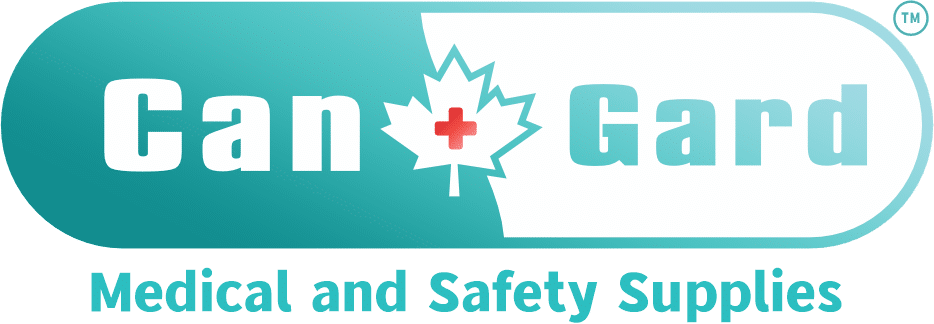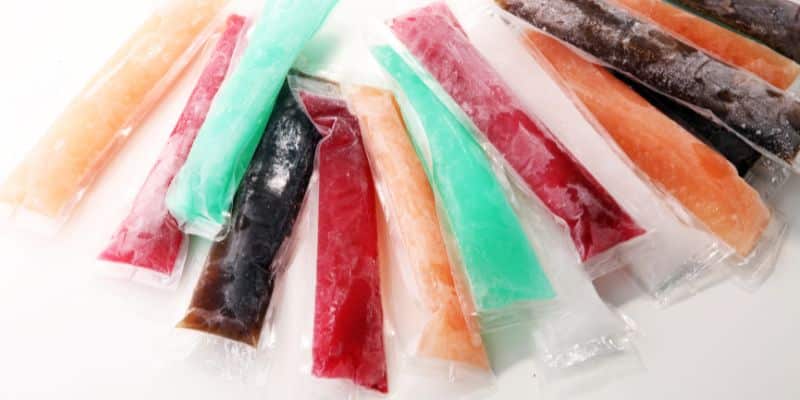First Aid/PPE, Medical Industry, Vitamins/Minerals
All About Preventing Dehydration on Worksites: How Rehydration Beverages & Freezer Pops Can Help
Labour, particularly in hot weather, poses significant dehydration risks for workers. Dehydration can lead to serious health issues, reducing productivity and increasing the likelihood of accidents. One simple yet effective solution is the use of electrolyte-infused freezer pops or beverages. These products provide both hydration and a cooling effect, making them an excellent choice for preventing dehydration on worksites.
In this guide, we’ll explore the importance of staying hydrated, the risks of dehydration, and how specially formulated freezer pops and beverages can keep vital workers safe.
What Are the Risks of Dehydration on Worksites?
Dehydration occurs when the body loses more fluids than it takes in, leading to an imbalance that can affect various bodily functions. On worksites, especially in hot or physically demanding environments, dehydration can occur quickly. Risks include:
- Heat Exhaustion: A condition where the body overheats due to excessive loss of water and salt, leading to fatigue, dizziness, and nausea.
- Heat Stroke: A severe form of heat exhaustion that can be life-threatening if not treated promptly. Symptoms include confusion, loss of consciousness, and even seizures.
- Reduced Cognitive Function: Dehydration can impair concentration, decision-making, and reaction times, increasing the risk of accidents.
- Muscle Cramps: Loss of electrolytes can lead to painful muscle cramps, affecting a worker’s ability to perform their tasks effectively.
- Kidney Issues: Chronic dehydration can lead to kidney stones or kidney failure, particularly in workers who are repeatedly exposed to hot environments without adequate hydration.
How Much Water Should Workers Drink to Stay Hydrated?
The amount of water needed varies depending on the individual, the temperature, and the level of physical exertion. However, general guidelines suggest that workers should drink 8-12 ounces of water every 15-20 minutes when working in hot conditions. This equates to roughly 1 quart (32 ounces) per hour. It’s important to note that waiting until you’re thirsty is not an effective strategy, as thirst is a late indicator of dehydration. Proactive hydration is key.
In addition to water, electrolyte replacement is just as important, especially for workers who sweat heavily. Electrolytes help maintain fluid balance in the body and support muscle and nerve function, making them essential for preventing dehydration-related complications.
What Are Electrolytes?
Electrolytes are another name for a set of essential minerals: potassium, sodium, calcium, and magnesium. They help the body maintain fluid homeostasis (balance) and are central to nerve and muscle function, among many other physiological processes.
How Do We Get Electrolytes?
For normal days and activities, the electrolytes we get from eating a balanced diet can be enough. However, athletes who sweat a lot or those doing activities on a hot, sunny day will require more than average. You can easily get more electrolytes through sports drinks like Gatorade, supplement powders and tablets and even electrolyte-infused popsicles.
How Do Electrolyte-Infused Freezer Pops Help with Hydration?
Electrolyte-infused freezer pops offer a dual benefit: they provide hydration while also cooling the body. These products are specifically designed to replenish lost electrolytes, such as sodium, potassium, and magnesium, which are critical for maintaining fluid balance and muscle function.
- Cooling Effect: The frozen nature of the pops helps lower body temperature, providing immediate relief from heat.
- Electrolyte Replenishment: Unlike plain water, these pops replace essential electrolytes lost through sweat, helping to prevent dehydration-related symptoms like cramps and fatigue.
- Convenience: Portable and easy to distribute on worksites, freezer pops offer a convenient way to ensure workers stay hydrated throughout the day.
- Taste Appeal: The flavours of these pops can encourage workers to consume them regularly, ensuring consistent hydration.
When Should Rehydration Beverages and Freezer Pops Be Distributed on Worksites?
Timing is crucial for preventing dehydration. Rehydration beverages and freezer pops should be distributed at regular intervals, particularly during peak heat hours (usually between 10 AM and 4 PM). Here are some key times to consider:
- Before Work: Encourage workers to consume an electrolyte-infused drink before starting their shift to prehydrate and prepare their bodies for the heat.
- During Breaks: Offer freezer pops during scheduled breaks to help replenish lost electrolytes and cool down the body.
- After Work: Providing freezer pops at the end of the day can help workers recover from the heat and start rehydrating for the next day.
It’s also important to consider the individual needs of workers, as some may require more frequent hydration depending on their workload and physical condition.
What Are the Signs of Dehydration to Watch for on Worksites?
Recognizing the early signs of dehydration can prevent more serious health issues from developing. Some common symptoms include:
- Dry Mouth and Thirst: These are early indicators that the body is starting to lose more fluids than it’s taking in.
- Fatigue and Weakness: Workers may feel unusually tired or weak, even if they haven’t been working for long.
- Dizziness or Lightheadedness: Dehydration can affect blood pressure, leading to dizziness, especially when standing up quickly.
- Dark Urine: Dark yellow or amber-coloured urine is a sign that the body is conserving water due to dehydration.
- Headache: Dehydration can cause headaches as the brain temporarily shrinks from fluid loss, pulling away from the skull.
Supervisors and workers should be trained to recognize these signs and take immediate action if dehydration is suspected.
What Are the Best Practices for Preventing Dehydration on Worksites?
Preventing dehydration requires a combination of proactive strategies:
- Hydration Stations: Set up designated areas where workers can easily access water, electrolyte drinks, and freezer pops throughout the day. Be sure to include signage.
- Regular Breaks: Schedule frequent breaks in shaded or air-conditioned areas to allow workers to cool down and rehydrate.
- Monitoring: Keep an eye on workers, especially those who are older, overweight, or have pre-existing medical conditions, as they are more vulnerable to dehydration.
- Education: Educate workers on the importance of staying hydrated and recognizing the signs of dehydration. Provide training on how to use electrolyte-replacement products effectively.
- Adjusting Work Schedules: When possible, schedule the most physically demanding tasks for cooler parts of the day, such as early morning or late afternoon.
Are There Any Specific Groups of Workers at Higher Risk of Dehydration?
Yes, certain groups are more susceptible to dehydration due to their physiological makeup or job requirements:
- Older Workers: As people age, their sense of thirst diminishes, making them less likely to drink enough fluids.
- Workers with Pre-Existing Conditions: Conditions such as diabetes, heart disease, or kidney disease can increase the risk of dehydration.
- Heavy Laborers: Those performing physically demanding tasks in hot conditions are at a higher risk due to increased fluid and electrolyte loss through sweat.
- Outdoor Workers: Those exposed to direct sunlight for prolonged periods, such as construction workers, landscapers, and agricultural workers, are particularly vulnerable to dehydration and heat-related illnesses.
How Can Employers Encourage Proper Hydration on Worksites?
Employers play a crucial role in promoting hydration and preventing dehydration among their workers. Here are some strategies:
- Provide Free Hydration Products: Offering electrolyte-infused freezer pops, water, and sports drinks free of charge encourages workers to stay hydrated.
- Implement a Hydration Policy: Develop a formal hydration policy that outlines the frequency of breaks, access to hydration products, and the responsibilities of supervisors and workers.
- Lead by Example: Supervisors and management should model proper hydration practices to set a positive example for workers.
- Incentivize Hydration: Consider offering small rewards or incentives for workers who consistently follow hydration practices, such as completing hydration checklists or participating in hydration challenges.
What Should Be Included in a Worksite Hydration Kit?
A well-stocked hydration kit can make a significant difference in preventing dehydration. Essential items include:
- Water Bottles: Ensure workers have access to clean, refillable water bottles to encourage regular hydration.
- Electrolyte Tablets or Powder: These can be added to water for quick and easy electrolyte replenishment.
- Cooling Towels: These can be soaked in water and draped around the neck to help reduce body temperature.
- First Aid Supplies: Include items like rehydration salts and cooling packs to treat early signs of dehydration or heat exhaustion.
Get The Rehydration Products You Need from CanGard Medical & Safety Supplies
Dehydration on worksites is a serious issue that can lead to health complications and reduced productivity. By implementing proactive hydration strategies, including the use of electrolyte-infused freezer pops, you can protect your workforce and ensure a safer, more efficient work environment.
For more information on hydration products and worksite safety supplies, contact CanGard today and sign up for our email list to stay updated on the latest safety solutions.

